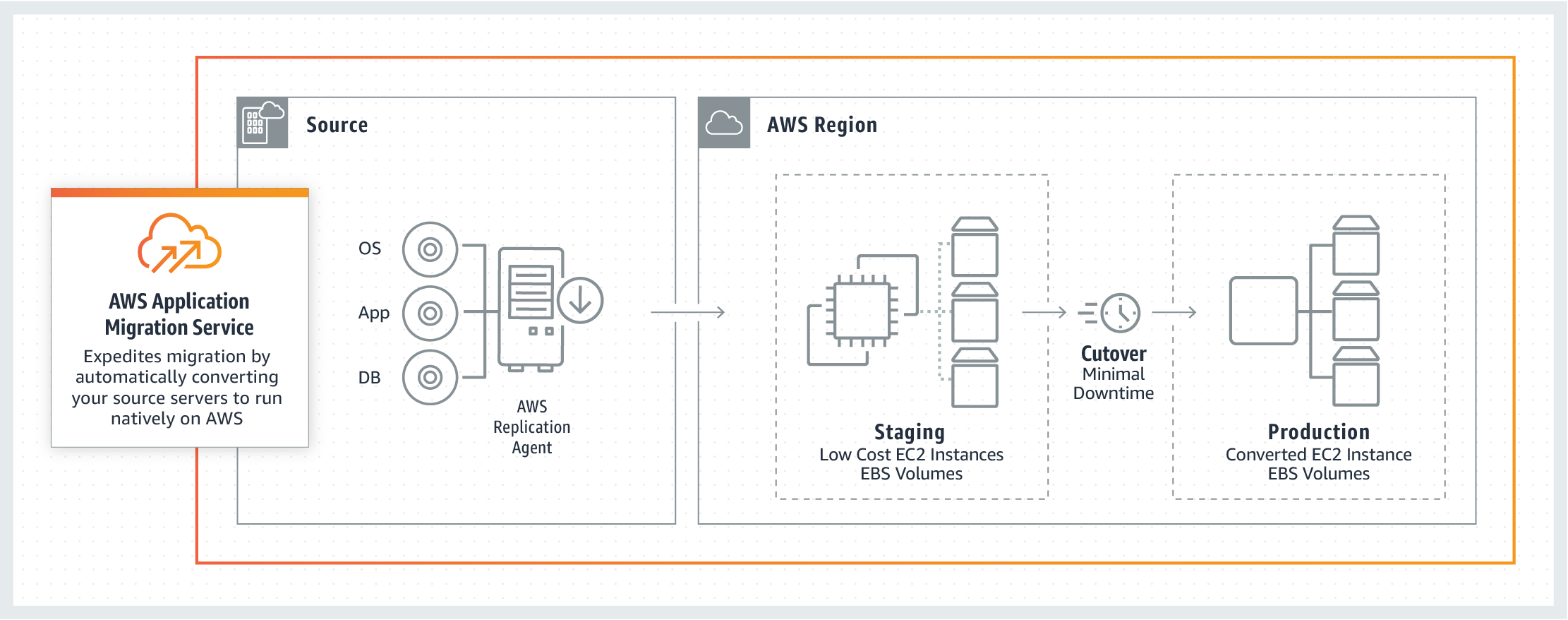AWS Application Migration Service (AWS MGN) is a new service that enables organizations to move applications to AWS without making changes to the applications, their architecture, or the migrated servers. The public cloud provider announced the general availability of this service.
AWS MGN is the successor of CloudEndure, which the company acquired in 2019. CloudEndure includes a migration offering for customers to move applications from any physical, virtual, or cloud-based infrastructure to AWS at no charge. This offering complements another AWS offering named AWS Server Migration Service (AWS SMS), an agentless service for migrating on-premises workloads to AWS.
AWS now comes with a new migration service, which they recommend as the primary migration service for lift-and-shift migrations to AWS. Moreover, according to AWS, the new service simplifies migration by enabling customers to use the same automated process for various applications. Customers can migrate all kinds of applications such as SAP CRM, Oracle E-Business Suite, Microsoft SharePoint, and commercial databases to AWS.
When migrating to AWS, an AWS MGN Replication Agent must be installed on the source servers, and then users can view and define replication settings in the AWS MGN console. The migration service will use these settings to create and manage a staging area subnet with lightweight Amazon Elastic Compute Cloud (EC2) instances that act as replication servers used to replicate data between the source servers and AWS.
Channy Yun, a principal developer advocate for AWS, explains in the blog post on AWS MGN how the data replication works:
Replication servers receive data from the agent running on your source servers and write this data to the Amazon Elastic Block Store (EBS) volumes. Your replicated data is compressed and encrypted in transit and at rest using EBS encryption. AWS MGN keeps your source servers up to date on AWS using continuous, block-level data replication. It uses your defined launch settings to launch instances when you conduct non-disruptive tests or perform a cutover.
Once users launch test or cutover instances, AWS MGN converts their source servers to boot and run natively on AWS – and when operating correctly, they can decommission their source servers. And lastly, they can monitor AWS MGN using Amazon CloudWatch, Amazon EventBridge, and AWS CloudTrail - collecting raw data and processing it into readable, near-real-time metrics.
AWS’s competitor in the cloud, Microsoft, also offers a migration service. Azure Migrate provides a centralized hub to assess and migrate to Azure on-premises servers, infrastructure, applications, and data.
Dion Hinchcliffe, vice president and principal analyst at Constellation Research, said in a tweet:
Migration services are key to let the economies of scale flywheel spin.
Currently, AWS MGN is available in US East (N. Virginia), US West (Oregon), US East (Ohio), Asia Pacific (Tokyo), Asia Pacific (Sydney), Asia Pacific (Singapore), Europe (Ireland), Europe (Frankfurt), and Europe (Stockholm) Regions. Customers can use the service for free for 90 days for each server they want to migrate and only incur charges for AWS infrastructure provisioned during migration and after cutovers, such as compute (Amazon EC2) and storage (Amazon EBS) resources. Furthermore, pricing details are on the pricing page.

